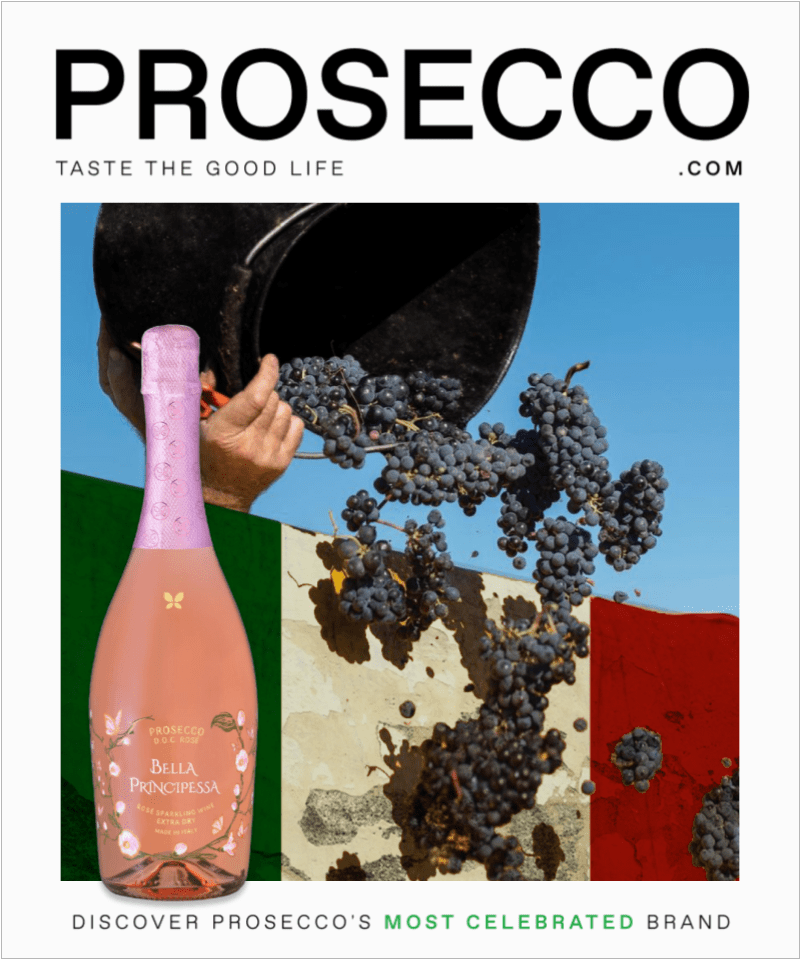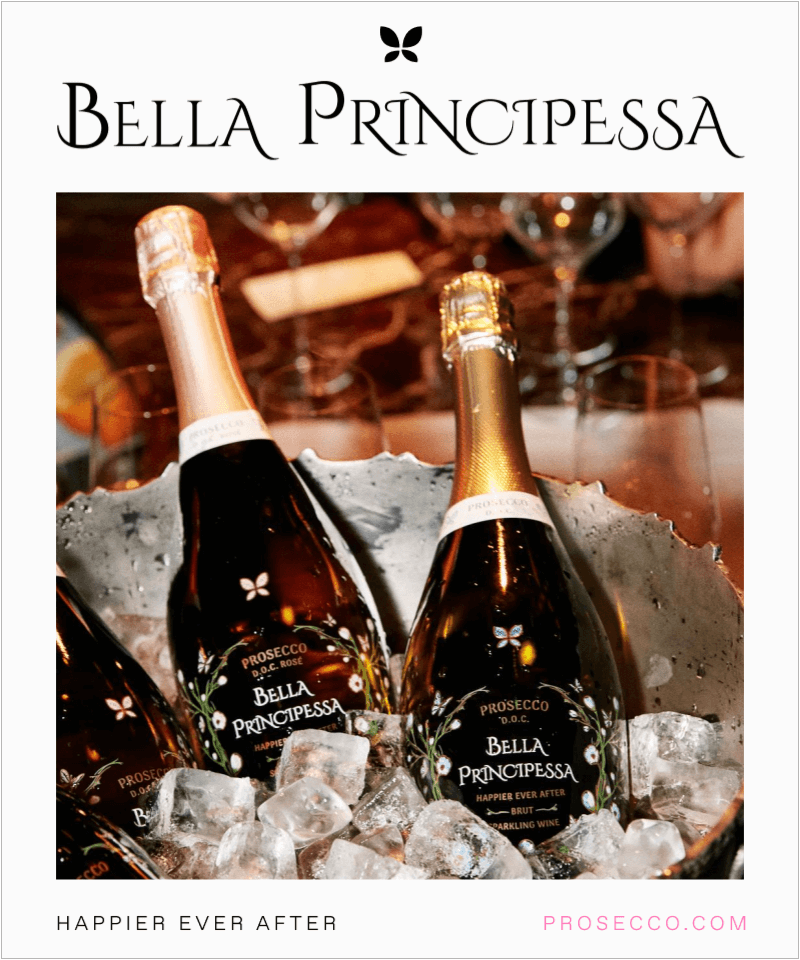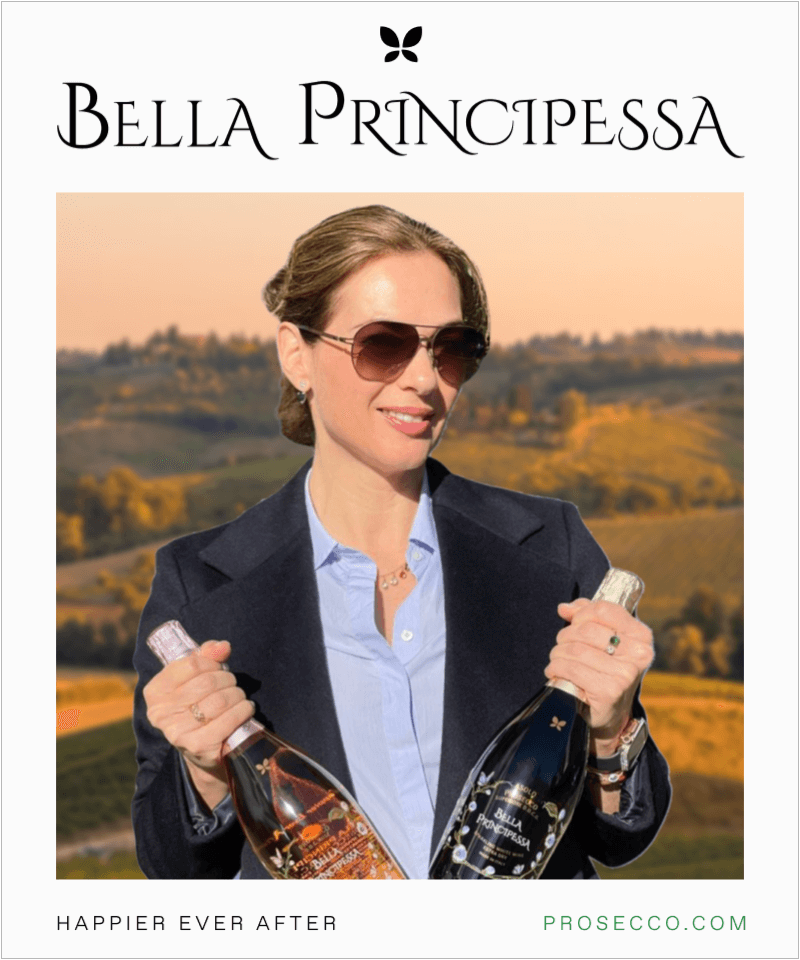“What is Prosecco?” This question opens the door to exploring the fascinating world of sparkling wines, where illustrious names like Bella Principessa Prosecco and Signorina Prosecco shine.
Introduction
Prosecco, a name that resonates with the clinking of glasses and the joy of celebrations, is more than just a sparkling wine. It is a symbol of Italian winemaking tradition, a testament to the artistry of viticulture, and a staple in festive occasions and quiet, refined enjoyment alike.
What is Prosecco?
At its core, Prosecco is a sparkling white wine originating from Italy, particularly from the Veneto and Friuli Venezia Giulia regions, encompassing nine provinces.
This geographical designation is crucial because, like Champagne, the name ‘Prosecco’ refers to the region as much as it does to the wine. The wine is named after the village of Prosecco in the province of Trieste, Italy.
The primary grape used in Prosecco is the Glera grape, which must constitute at least 85% of the wine’s composition. This grape variety is known for its ability to create light, refreshing wines with a pleasing balance of acidity and fruitiness. Glera grapes impart distinctive flavors and aromas to Prosecco, differentiating it from other sparkling wines.
Production and Types
Prosecco is produced using the Charmat method, which involves secondary fermentation in large steel tanks. This method is key to Prosecco’s character, giving it its signature freshness and effervescence.
The wine is available in various styles, ranging from ‘Tranquilo’ (flat, with little to no bubbles) to ‘Frizzante’ (lightly sparkling) and ‘Spumante’ (fully sparkling). This range allows for diverse tastes and experiences, catering to different preferences and occasions.

Flavor Profile and Characteristics
Prosecco is celebrated for its dry, light-bodied flavor. It is characterized by its vibrant, fruity notes that often include hints of green apple, pear, melon, and citrus, sometimes complemented by floral undertones.
The acidity in Prosecco makes it refreshing and a delightful aperitif or accompaniment to various dishes. Enjoying Prosecco within a year of purchase is typically recommended to experience its flavors in their prime.
Prosecco vs. Champagne
A common question among wine enthusiasts is how Prosecco differs from Champagne. While both are sparkling wines, they differ in several key areas, including grape varieties, production methods, and flavor profiles.
Champagne is made primarily with Chardonnay, Pinot Noir, and Pinot Meunier grapes using the traditional method (secondary fermentation in the bottle), often imparting a richer, more complex flavor. In contrast, Prosecco’s Charmat method leads to a lighter, more fruit-forward profile.
Cultural and Economic Significance
Prosecco holds a special place in Italian culture and the global wine market. Its popularity has been meteoric, with Prosecco symbolizing Italian winemaking expertise and a significant export product.
This popularity has led to legal challenges, as producers outside Italy have attempted to use the Prosecco name, highlighting the importance of geographical indication in the wine industry.
Renowned Brands: Bella Principessa and Signorina Prosecco
Brands like Bella Principessa Prosecco and Signorina Prosecco embody Prosecco’s essence. They capture the delicate balance of lightness, effervescence, and flavor for which Prosecco is known. With their distinct character and quality, these brands represent what Prosecco offers – a refreshing, elegant, and joyful wine experience.
Conclusion
Prosecco is more than just a sparkling wine; it celebrates Italian heritage, reflects winemaking art, and is a joyous accompaniment to life’s special moments. Whether it’s the refreshing zest of a glass of Bella Principessa or the refined elegance of Signorina Prosecco Prosecco Doc, this sparkling wine continues to captivate palates and hearts worldwide.











